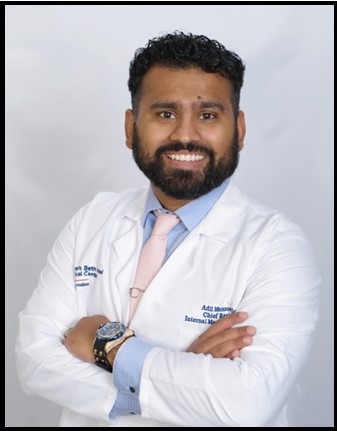Doctor Is In by Dr. Adil Manzoor OP/ED
The AAMC, Association of American Medical Colleges, predicted back in 2017 that physician shortage was on track to reach 104,900 by 2030. I remember seeing these numbers back then and totally freaking out. Then, the shortage of doctors in primary care stood at a possible 43,100 by 2030. I did the only thing I could – I hoped the situation gets better. Spoiler alert, it did not. It got worse.
Fast forward to 2020, and the estimated shortage of doctors, according to the AAMC, could be as high as 139,000 in 2032. For primary care, we could be looking at a shortage of 55,200 doctors. And you want to know the weird thing – I did not freak out as much. It’s as if I have become numb to these horrible numbers and statistics. This is the story of our healthcare system.
Over the years, there have been lots of flaws in the American healthcare system, but this, doctor shortage in primary care, is not one we can afford to live with. The overall health and wellbeing of the nation are largely dependent on the quality of primary health care services. When the primary healthcare sector fails, there isn’t much hope on the medical front.
The shortage of doctors is never a palatable situation, but even more so in primary care. I don’t quite think you understand how important primary care physicians are. According to research, raising the number of physicians in the primary care sector by one per ten thousand people is linked with a reduction in mortality by 5.3%.
With this, you’d expect that primary care fields should constantly be increasing in the number of doctors, but that’s not the case. In fact, the opposite is the case. And you know what is even more saddening? It is not only that the number of doctors is reducing, but the number of medical students that choose to go into primary care is also plummeting, reaching all-time lows. Am I disappointed? Yes, a little. Am I surprised? Not a single bit. Because, can you blame the students for not wanting to go into a field where the pay is ridiculous compared to other medical fields, big thanks to insurance companies, and where the chances of burnout are ridiculously high?
Then there’s also the fact that the doctors in the field are aging. The U.S. Census Bureau estimates that the total population of the country is going to increase by over ten percent in 2032, with people over the age of 65 increasing by 48%. One in three doctors in the U.S. today is over 65 years of age and is close to retirement. So, get this – the number of people willing to go into primary care is reducing, the number of people in the U.S. is increasing, and the number of doctors close to retirement is also increasing. This is bad news. If you are looking for a silver lining in all of this, don’t bother, there’s none.
What frightens me the most amidst all of this is what the implication of this shortage will be. I already mentioned that increasing primary care physicians are associated with lower mortality rates, right? Now guess what will happen when you reduce the number of primary care physicians. Go on, take a wild guess.
Not to mention that this shortage will further lower the time available for doctors to spend with their patients. The queues (lines) in doctors’ offices are getting longer every year. Getting an appointment is getting more and more difficult. Some doctors attend to 40 patients a day. 40! To make it work, these doctors cut down on the time they spend with each patient, reducing the quality of care, which increases the mortality rate in the long run.
Many doctors resort to charging exorbitantly to compensate for the effort they’re putting in, and what does this cause – low-earning people are deprived of the healthcare services they need. This will further increase the disparity between high/medium earners and low earners.
The increased workload is not only going to affect patients but also doctors. Imagine asking a doctor to attend to thirty to forty doctors a day and then acting surprised when they get burnt-out and break down. I mean, how can anybody survive in such grueling conditions? How? There isn’t any upside to a shortage of doctors. None whatsoever.
I am going to do what I did three years ago, the only thing I can do – I am going to hope for the best. It’s not looking particularly promising, but when has it ever?
This article was written by Dr. Adil Manzoor DO, a Board Certified Internist & Board Eligible Pediatrician, who works as a Hospitalist, and Emergency Room Physician. He is also the current President of Garden State Street Medicine, a non-profit organization whose sole purpose is to provide free preventive and acute urgent care services for the homeless. He is also the co-founder of his own unique medical practice Mobile Medicine NJ.
References
· https://www.news-medical.net/amp/health/Strategies-to-Improve-Shortage-of-Primary-Health-Care.aspx
· https://patientengagementhit. com/news/amp/understanding-physician-shortage-issues-patient-care-access
· https://www.washingtonpost. com/health/america-to-face-a-shortage-of-primary-care-physicians-within-a-decade-or-so/2019/07/12/0cf144d0-a27d-11e9-bd56-eac6bb02d01d_story.html
· https://www.news-medical.net/amp/health/Physician-Shortage.aspx
· https://www.aamc.org/news-insights/press-releases/new-findings-confirm-predictions-physician-shortage
· https://www.aamc.org/news-insights/press-releases/new-aamc-report-confirms-growing-physician-shortage


